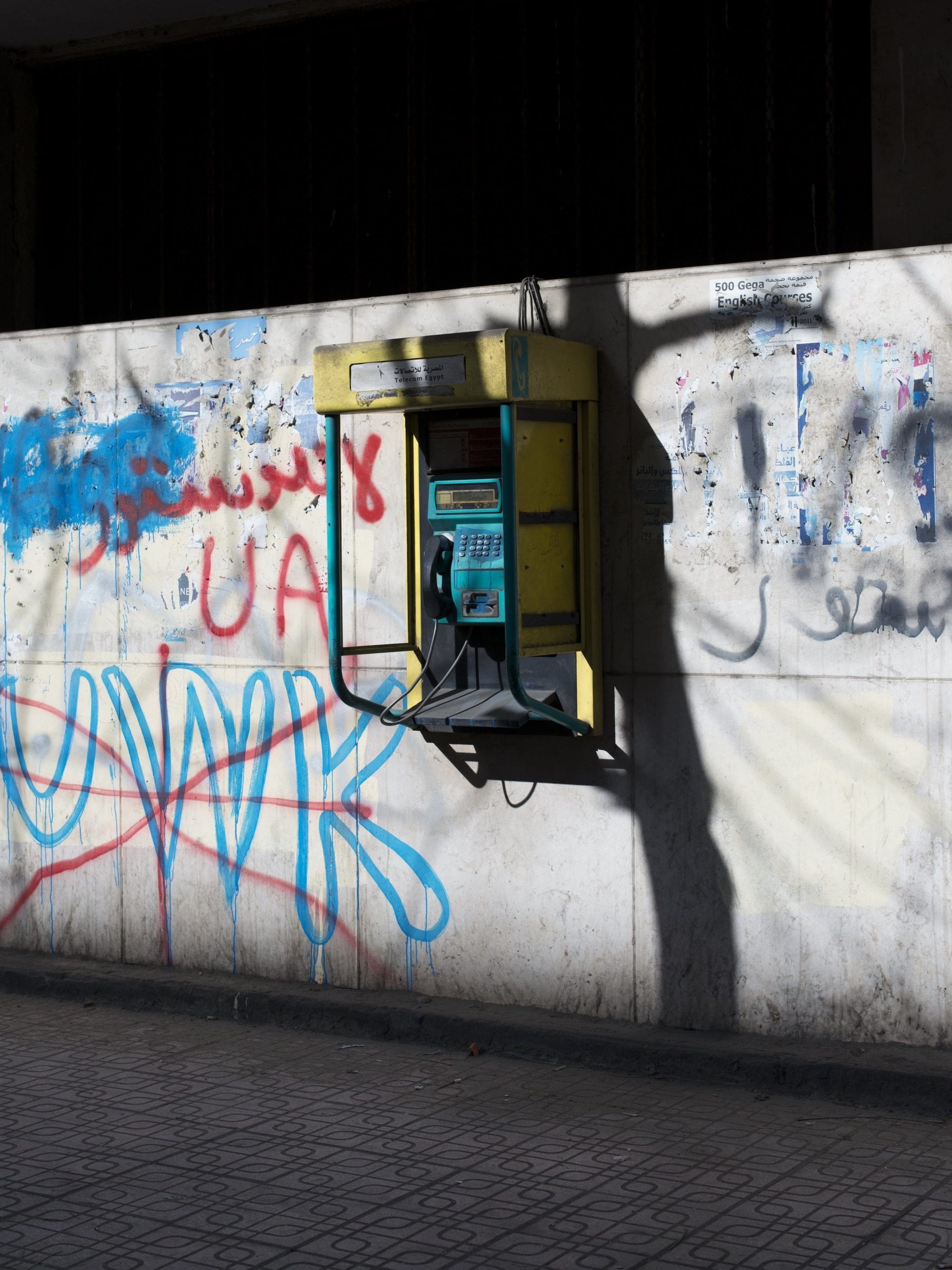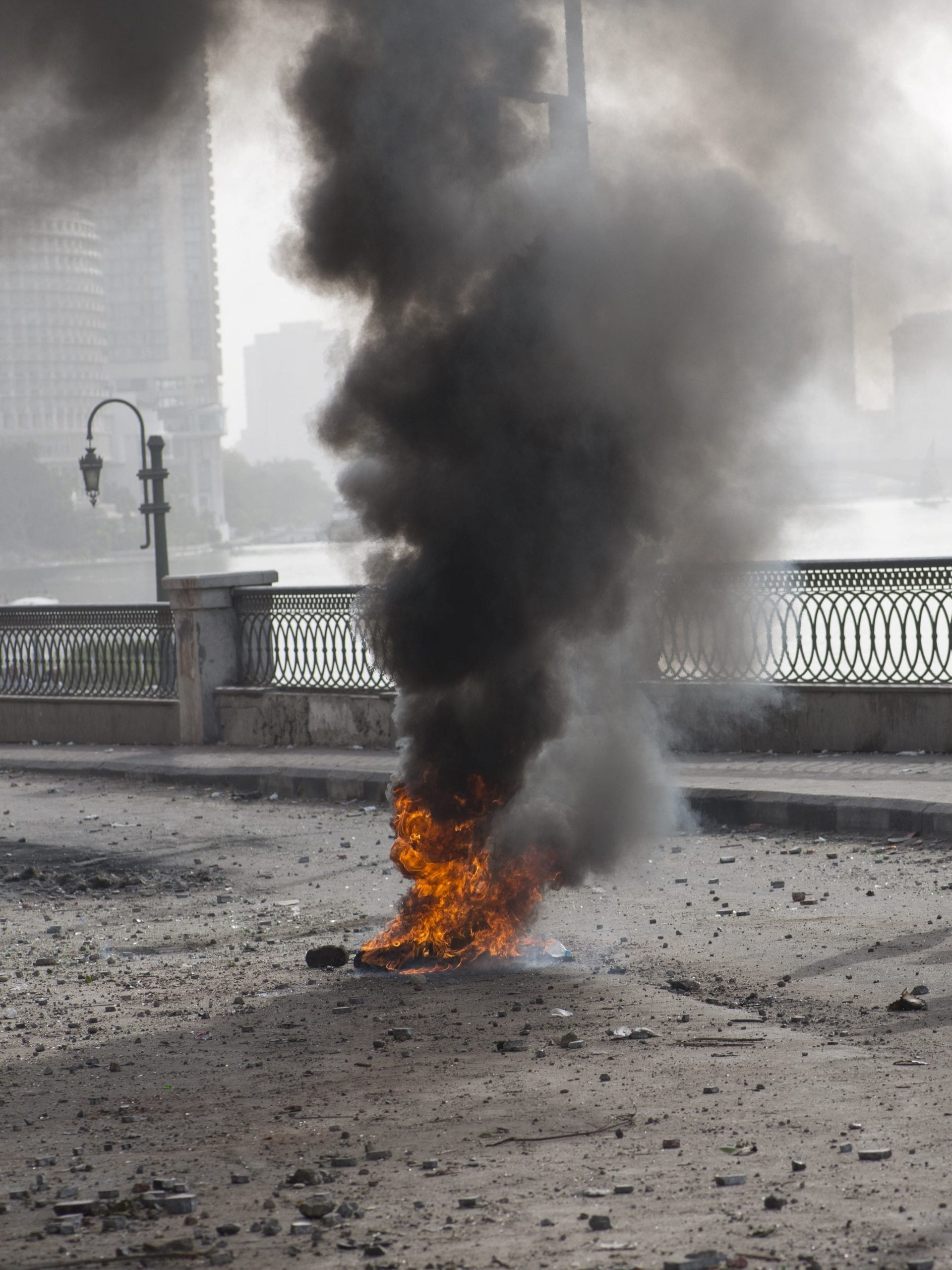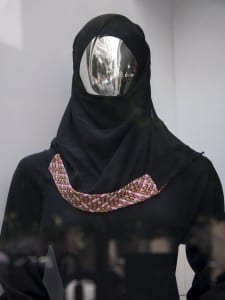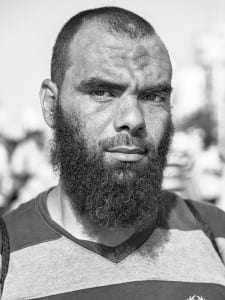Sequence and repeat
The work he made in Egypt, titled Fire in Cairo, is soon to be published under the Self Publish, Be Happy helm. “I always knew I wanted to do a book,” says Connors, “and it definitely changed the way I was thinking about photographing when I was there. The work I was making before was very much meant to be on the wall, but here I knew I wanted to incorporate writing, and when I was photographing I was often thinking about how the images would look in sequence and in relationship with each other.”
He also knew who he wanted to self-publish with: “More than anything I wanted to work with Bruno [Ceschel] and Tony [art director Antonio de Luca]. They had already included me in a small pamphlet they had published that had been curated by Nicholas Muellner, and I knew from that and other things they have produced that they have a real dedication to the book as an object. I think they are really pushing the boundaries of what a photobook can be, and they have the wherewithal and the imagination to do it. I wanted to be paired with that.”
The book has taken quite some time to put together, not least because he suffered what he describes as “pretty severe whiplash going from Cairo to the States”. He started teaching again right away and transitioned into being chair of his department, “which demanded an incredible amount of my attention”. But even aside from that, he needed time to digest the original cache of 20,000 images, which he and Ceschel had to whittle down to around 90.


His first draft was made at a friend’s cabin in Massachusetts, with nothing but his dog for company. After that, it went to Ceschel and back, to Connors’ friends and back, to de Luca and back to Connors again. “The object has been a real collaboration. The way my book has developed under their guiding hands is better than I could have done on my own,” says Connors.
“It took a long time to build the sequence,” says Ceschel, “because of the sheer amount of work we had to sift through. But that process really defined the book. Matthew had shot quite a lot of explicitly violent photos, for example; scenes of things he had seen in the street. As we began the edit we realised the book was more powerful without these images. We were trying to build this sense of general threat, of impending violence, and hope, but never quite showing it. The traces were more interesting. Besides, those other kinds of images had already been covered.”
The sequence includes a number of what appear to be repeated images, but which on closer inspection reveal themselves as two shots of the same person taken one after the other. “When I saw those – and Matthew was quite keen on keeping them – I was, like, ‘Oh, they do something, but I couldn’t tell you why,’” says Ceschel, continuing: “Matthew had set a mood, and sometimes mood is not about objective reason.”


In a similar vein, the book also includes a number of repeated themes – the sky, helicopters, the green laser pens that became a distinctive feature of the protests. “To me they are like notes in a song,” says Ceschel, “and they increase your sense of wariness and beauty.”
“When I was photographing early on, I was creating these categories,” says Connors. “So I was photographing fire, then looking for tear gas clouds, concrete barriers, layers of spray paint. Green laser pointers became a very strong motif.” The book starts in one place and ends somewhere very different – “there’s a real trajectory,” says Connors. “It builds. It swings between the familiar and the unfamiliar, and it maintains tension between beauty and threat and historical consequence – it’s meant to keep you off balance. The ambiguity and the discomfort that builds throughout – you wouldn’t experience that outside of the book form. And a lot of that was executed by the way the book is laid out.”
